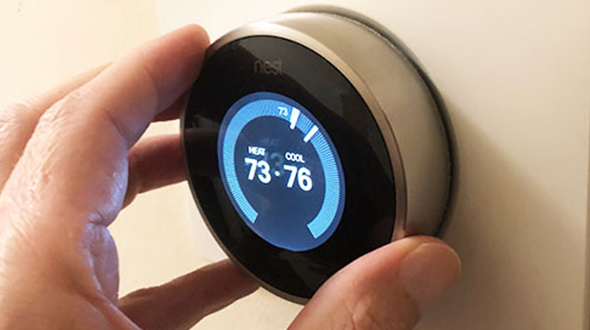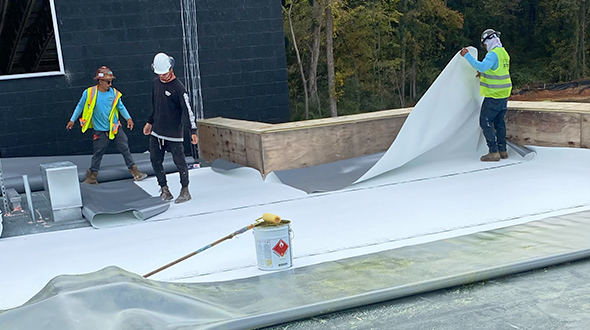
Prevent not knowing the pros, cons, and whether a cool roofing system is right for your next roof replacement project. Knowing how cool roofs can benefit your structure will help you determine which roofing system to choose when the time comes.
atlantacommercialroofingcontractors.com gathered the following information about what a cool roofing system is, its advantages, and disadvantages.
What is a Cool Roof?
A cool roof (made of a material or has a coating that can lower the roof surface temperature) is designed to reflect more sunlight than a conventional roof, absorbing significantly less solar energy. A roofing system with these properties naturally lowers a building’s temperature, just as wearing light-colored clothing can keep you cool on a warm, sunny day. Conventional roofs can reach extreme temperatures of 150°F or more on a summer afternoon, while cool roofs average 50°F less.
Does a Cool Roof Really Work?
Yes. A cool roof reduces summer energy usage, saving you significant money, and will also stabilize the temperatures in your unconditioned spaces (garage or spare room). Installing a cool roof is most beneficial in warm climates, where the winters are mild, and structures rely less on the inherent heat gain traditional roofing systems provide.
Cool Roofing Systems Vs. Global Warming
Cool roof reflective surfaces can deliver high solar reflectance and high thermal emittance. On a global scale, reflective surfaces are essential to daytime cooling, which has been proposed as a partial solution to global warming. The most well-known type of reflective surfaces in construction are those of cool roofs.
However, recent research observed the net global warming for light-colored surfaces rather than the effect on a single building or small area. This analysis discovered that white or reflective roofs contribute to global warming rather than reducing it.
That’s because such surfaces initiate a chain reaction that increases the amount of sun a city receives. The reflective surfaces reduce the vertical transport of moisture to the atmosphere, restricting cloud coverage. That translates to less rain and an increase in surrounding drought conditions.
Advantages of Installing a Cool Roof
Cool roofs typically cost the same as other comparable roofing materials. For cool roofs that may cost slightly more, the difference can be quickly recovered in savings from lower energy consumption, rebates, incentives, HVAC equipment downsizing, and extended roof lifespan. Consider the following advantages and benefits of cool roofs:
- Reduced energy bills by 10%-30%
- Improved comfort for indoor spaces without air conditioning
- Lower maintenance costs
- Extended roof life
And consider the following environmental benefits:
- Less peak electricity demand (helps prevent power outages)
- Reduced urban heat island effect (occurs when an urban environment is hotter than surrounding rural areas due to black surfaces)
- Alleviated air pollution and global warming concerns by lowering CO2 and other HVAC-related emissions
Note: Building owners must consider the region’s climate. Cool roofs achieve the greatest cooling savings in hot climates but may not decrease energy usage and costs in cooler climates.
Disadvantages of Installing a Cool Roof
Even cool roof opponents must acknowledge that cool roofs significantly reduce air conditioning loads. According to the US Department of Energy, roofs can reach 150°F on the hottest days, whereas installing a cool roof reduces those surface temperatures by as much as 50°F. However, there are potential drawbacks like:
- High retrofitting costs. Converting an existing roof can be costly, especially when you factor in repair work, recoating, and cleaning costs.
- Potential for algae or mold growth
- Lighter roofing system colors may appear dirtier
- Increases winter heating demand
Cool roofs work best for hotter climates, where the cooling season is more extended, and air conditioning is in high demand. In colder regions, these roofs may have the opposite effect, driving up heating costs in the winter.
Installing a Cool Roof
When deciding whether to install a cool roofing system, you need to determine if the energy savings and other benefits can justify the cost. How much energy you save depends on several factors like your structure’s climate and surroundings, the roof assembly’s insulation, the roof type, and the efficiency of your building’s HVAC system.
When building a new structure, you can decide during the planning phase what roof type to install and whether or not it should be a cool roof.
Cost and Energy Savings

A cool roof does not necessarily cost more than a conventional roof, especially if you are installing a new roof or replacing an existing one. However, converting a standard roofing system that’s in good condition into a cool roof can be costly.
Cool Roof Rating Council
The Cool Roof Rating Council (CRRC) (created in 1998) develops accurate and credible methods for evaluating and labeling solar reflectance and thermal emittance (radiative properties) of roofing products and disseminating that information to all interested parties. For more information on cool roof structures, components, and ratings, visit the Cool Roof Rating Council at coolroofs.org
Cool Roofing Systems
In this article, you discovered crucial information on the definition, advantages, and disadvantages of installing a cool roofing system on your residential or commercial structure.
Knowing how a cool roof can benefit your structure and the environment will help you come to an informed decision when you need to install or replace your roof.
Ignoring the disadvantages of a cool roof system can leave you with increased utility bills due to your HVAC system struggling during colder weather.
Sources:
energy.gov/energysaver/cool-roofs
energystar.gov/products/roof_products/cool_roofs_emissivity
epa.gov/heatislands/using-cool-roofs-reduce-heat-islands
